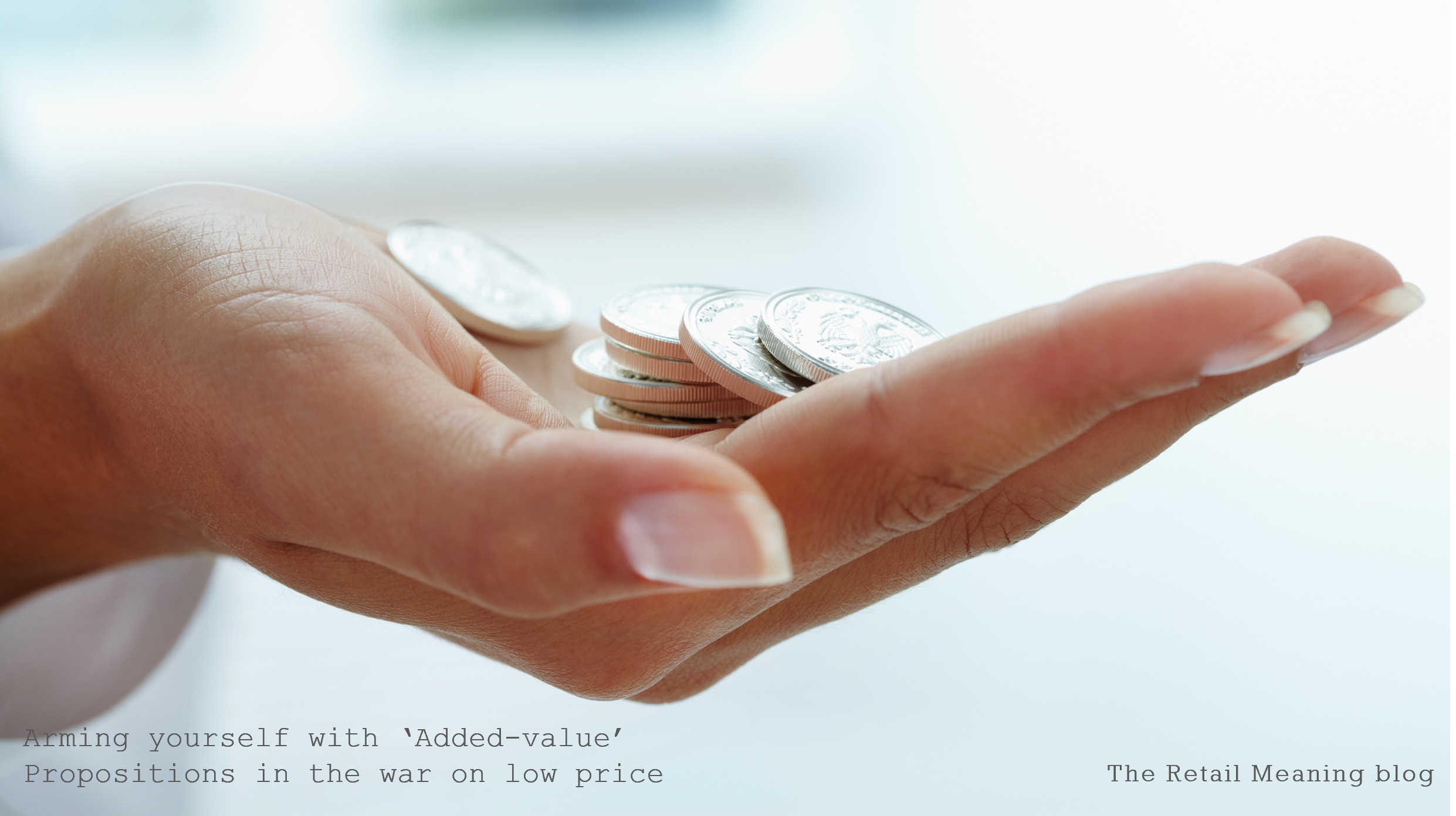In these ‘cost-of-living’ times I am reminded of one of my first lessons in retail. The difference between price & value.
They sound similar and considering how often the word ‘value’ is misused, as in ‘value retailers’ who are in fact ‘low price retailers,’ anyone would be excused for thinking they are the same.
I’ve worked with clients who are the lowest price, and those who definitely are not. But the fact is they both offer ‘value.’ Where importantly ‘value’ represents ‘value for money’ whatever the price.
If customers, at any price point, perceive ‘good value for money’ then they will buy. If they see ‘poor value for money’ then they will not. That’s why customers simply do not always buy the lowest price, from the lowest priced retailers.
The key question is what adds value? And how does this play out in a customer market where 99% of retailers are not the lowest price. In a ‘cost-of-living crisis’ how can those 99% attract customers through their doors and convince them to buy?
What they can’t do is offer the same products that can be bought in low-price competitors, but at a higher price. The only way this works is if you have the advantage of micro-convenience, or local exclusivity. People will pay more for convenience. However, while being on the doorstep may have worked 30 years ago, Amazon has now made convenience available to most people, and for free, whilst making market exclusivity a thing of the past.
Ask anyone from Toys R Us to Woolworths what it’s like to sell generic products at mid-market prices.
The ‘added-value,’ that makes a difference for the 99%, comes in 2 ways.
Firstly, through selling different brands and versions of familiar products that mass market chains don’t have. Brands that offer something different, will translate as something better, for those who appreciate variety in their lives.
Secondly, to create a shopping experience, a brand proposition, that surrounds any product with the glow of added-value. The product may be the same as anywhere, but the experience is better. It is better through being more personal, more intimate, more informed, more exciting, more worthy…or whatever ‘more’ counts as ‘added-value’ in your customers eyes.
Thankfully customers now buy shopping experiences, and not just products, in many cases. This is an opportunity that all retailers need to grasp with both hands. Because generic retailers selling generic products will go bankrupt.
Independent retailers, local shops, small chains need to create a ‘brand proposition’ that is appealing and is distinctively theirs. They need to generate unique and irresistible personalities.
Understand fully your customers, as a group and as individuals, and what they want from you, as a retailer. In the health sector alone, this could range from more variety & choice of brands to immersive customer support, personalised services, deliveries, click&collect, and home visits. These could all contribute to that ‘added-value’ distinction & attraction.
Develop new collaborations to build this proposition. Proactively search for, and partner directly with, local or exclusive new brands. Invite new collaborators into your shop space to offer complementary services, treatments, experiences, and added-value.
For sure, in our ‘cost-of-living’ market there are many customers who can, and will, only buy the lowest price. But there are many others who will pay more for intimacy, inspiration, reassurance, excitement, and integrity from a retailer.
Whether you are the lowest price, or not, never let your customer down, never allow them to fail in your shop. Never be out of stock, never be inconvenient or difficult to shop, if you are the lowest price. Never be unfriendly, ill-informed, dull, dishonest, or rude, if you rely on added-value experiences to attract your customer.
Because whatever price or value level you are, you can never afford to lose the most important commodity you have. The trust of your customer.
